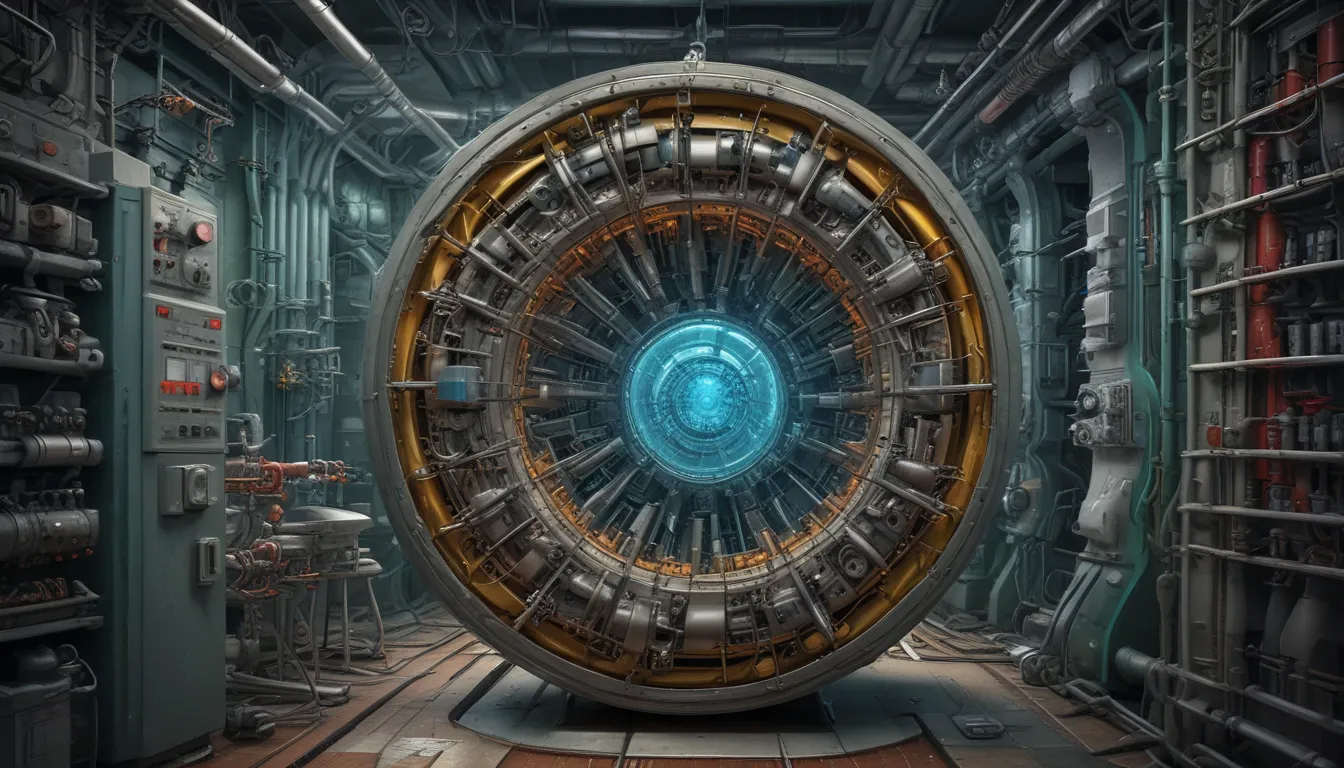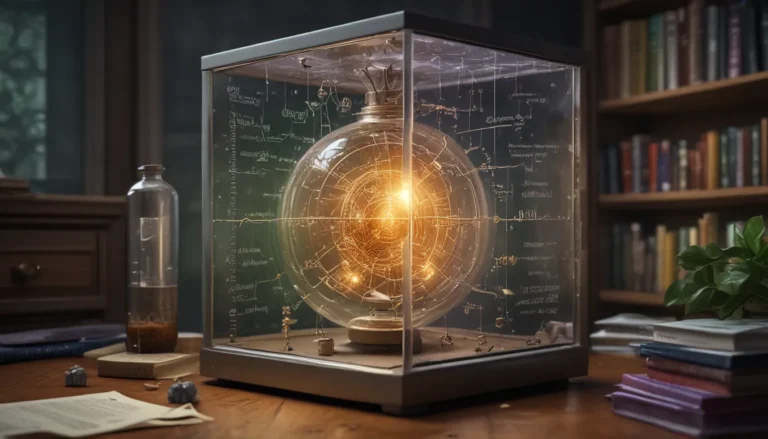A Note About Images: The images used in our articles are for illustration purposes only and may not exactly match the content. They are meant to engage readers, but the text should be relied upon for accurate information.
Welcome to the enchanting realm of nuclear physics, where we will embark on a fascinating journey to uncover 18 enigmatic facts that illuminate the mysterious and intricate world of atomic nuclei. Delving into the smallest particles to the incredible power of nuclear reactions, nuclear physics plays a pivotal role in expanding our comprehension of the universe’s fundamental secrets.
Nuclear physics serves as a cornerstone in the study of atomic nuclei, their structures, properties, and interactions. This field delves deep into the core of matter and energy, unraveling the complexities of the atomic domain. The profound discoveries and technological advancements in nuclear physics have revolutionized various applications, including nuclear energy, medical imaging, and the exploration of the universe’s origins.
So, prepare to be astounded as we venture into the captivating universe of nuclear physics, where we will unveil astonishing facts that will leave you mesmerized by the marvels of the atomic realm.
Unlocking the Mysteries of Nuclear Physics
- Nuclear physics explores the tiny world of atomic nuclei, leading to amazing discoveries like nuclear energy, medical treatments, and even our understanding of the universe’s birth!
- Nuclear physics is a super cool and ever-changing field that helps us create clean energy, fight cancer with advanced treatments, and unlock the secrets of the cosmos.
The Intrigues of Nuclear Physics
Nuclear physics delves into the properties, structures, and behaviors of atomic nuclei, which consist of protons and neutrons. This multifaceted field encompasses diverse branches, such as nuclear reactions, radioactivity, and nuclear energy.
The Revolution of Nuclear Fission
The groundbreaking discovery of nuclear fission by Otto Hahn and Fritz Strassmann in 1938 transformed our comprehension of nuclear physics. It unveiled that atomic nuclei could be split into smaller fragments, unleashing immense energy and paving the way for advancements in nuclear power generation and atomic weaponry.
Unveiling the Power of Nuclear Fusion
Nuclear fusion, the process of merging atomic nuclei to form a heavier nucleus, powers the sun and stars, emitting vast amounts of energy. This phenomenon is responsible for the incredible heat and light emanating from stars, including our very own sun.
The Vital Role in Medical Science
Nuclear physics plays a vital role in medical diagnostics and treatment, with techniques like positron emission tomography (PET) and radiation therapy harnessing the principles of nuclear physics to detect and combat diseases, including cancer.
Unraveling the Strong Nuclear Force
The force that binds protons and neutrons within the atomic nucleus is known as the strong nuclear force, one of nature’s fundamental forces. Acting over minuscule distances, it overcomes the electromagnetic repulsion between positively charged protons.
Powering the World with Nuclear Reactors
Nuclear reactors generate electricity by utilizing the heat produced from sustained nuclear fission reactions. Through controlled chain reactions, these reactors produce substantial heat that is converted into electricity, serving as a significant power source in many nations.
Advancements in Radiometric Dating
The study of nuclear physics has led to advancements in radiometric dating, where the decay of radioactive isotopes can determine the age of rocks, artifacts, and fossils. This provides valuable insights into Earth’s history and the evolution of life.
The Legacy of the Atomic Bomb
The study of nuclear physics contributed to the development of the atomic bomb. During World War II, the Manhattan Project utilized nuclear physics knowledge to build the first atomic bombs, resulting in their devastating use in Hiroshima and Nagasaki.
The Significance of Neutrons
Neutrons are indispensable for sustaining nuclear chain reactions. They play a crucial role in initiating the fission process and releasing additional neutrons that can trigger subsequent reactions.
Unraveling Mysteries with Particle Accelerators
Nuclear physics research involves particle accelerators to study the fundamental properties of atomic nuclei. By accelerating particles to high speeds, scientists can examine the behavior and structure of atomic nuclei under various conditions.
Bridging Science and Medicine with Radioisotopes
The production of radioisotopes through nuclear reactions finds applications in medicine and industry. These radioisotopes are used in medical imaging, sterilization processes, and industrial measurements.
Unveiling Astrophysical Phenomena with Nuclear Physics
Theories and models in nuclear physics aid in understanding astrophysical phenomena. By studying nuclear processes, scientists can unravel the mysteries of stellar evolution, supernovae explosions, and the origins of elements in the universe.
Insights into the Early Universe
The study of nuclear reactions and particle interactions sheds light on the conditions and processes during the Big Bang and the universe’s formation, deepening our understanding of the early universe.
Driving Sustainability with Nuclear Power
The application of nuclear physics in energy production helps mitigate greenhouse gas emissions. Nuclear power, as a low-carbon energy source, contributes to combating climate change by offering a reliable and sustainable alternative to fossil fuels.
Pursuing Clean Energy through Nuclear Fusion
Ongoing research in nuclear physics explores the potential of nuclear fusion as a clean and virtually limitless energy source. If achieved, nuclear fusion has the capacity to provide abundant and sustainable energy without generating long-lived radioactive waste.
Innovating Cancer Treatment with Particle Therapy
Advancements in nuclear physics have led to the development of particle therapy for cancer treatment. Using charged particles like protons and heavy ions, particle therapy precisely targets tumor cells while minimizing damage to surrounding healthy tissues.
Tools of the Nuclear Physics Trade
Nuclear physics experiments necessitate sophisticated detectors and instruments to measure and analyze particle interactions. From cloud chambers to particle detectors and spectrometers, these tools enable scientists to observe and comprehend the intricate processes within the atomic nucleus.
Embracing the Ever-Evolving Field of Nuclear Physics
Nuclear physics is an ever-evolving field with ongoing research and discoveries. Scientists and researchers globally continue to push the boundaries of nuclear physics, uncovering new phenomena and expanding our understanding of the fundamental laws governing the universe.
Conclusion: Embracing the Wonders of Nuclear Physics
In conclusion, nuclear physics captivates with its enigmatic nature, unveiling astonishing facts that showcase its significance and impact on technology, medicine, and energy production. From the immense energy concealed within atomic nuclei to the intricate interactions of subatomic particles, nuclear physics shapes our understanding of the universe’s core principles. As we delve deeper into nuclear physics research, we unlock the potential to address global challenges like sustainable energy generation, nuclear waste management, and probing the enigmas of the cosmos. With each scientific exploration and breakthrough, nuclear physics continues to shape our future and illuminate the mysteries of the atomic world.
FAQs
- What is nuclear physics?
-
Nuclear physics delves into the properties and behavior of atomic nuclei and the particles they contain.
-
How does nuclear power work?
-
Nuclear power utilizes the energy released from splitting atoms through nuclear fission, generating heat converted into electricity.
-
What are the applications of nuclear physics?
-
Nuclear physics finds applications in energy production, medicine, scientific research, and radiocarbon dating of archaeological artifacts.
-
Is nuclear power safe?
-
Properly operated, nuclear power is considered safe, with stringent safety regulations in place to prevent accidents and manage radioactive materials.
-
What are the implications of nuclear fission?
- Nuclear fission has both positive and negative implications, providing clean energy while necessitating careful management of radioactive waste to avert environmental and health risks.
Embark on a mesmerizing journey through the captivating world of nuclear physics, where each fact unveils the wonders and complexities of the atomic domain. As we continue to push the boundaries of scientific exploration, nuclear physics offers a profound understanding of the universe’s fundamental laws and the potential to transform our world with innovative discoveries and sustainable solutions. Join us in unraveling the enigmatic beauty of nuclear physics and discover the endless possibilities it holds for shaping our future.






